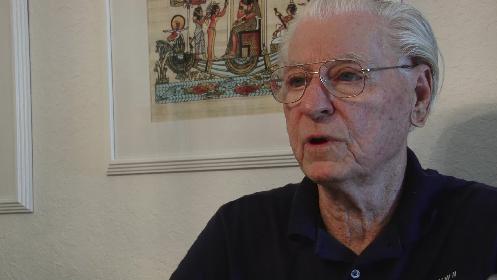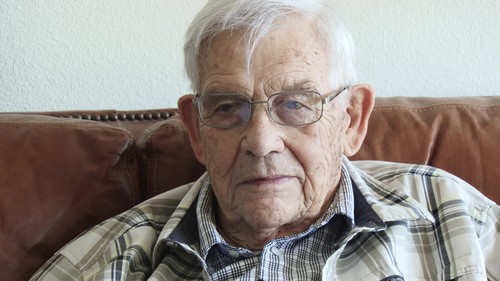Advanced Search
-
Bennett, Richard Getting to Know PT-470

Richard Bennett described the PT-470 as being armed with a thunderbolt, which is a 37mm and a 20mm cannon mounted together, two twin .50s [Annotato
-
Bennett, Richard Life Lessons

Richard Bennett's transition from sailor to civilian was so wrapped up in school, work and family matters, he hardly noticed it happening.
-
Bennett, Richard Overseas Deployment and First Combat Action

Embarking on their journey to the Pacific, Richard Bennett's squadron [Annotator's Note: Motor Torpedo Boat Squadron 31 (MTBRon 31)] left
-
Bennett, Richard PT-470's Kills

Richard Bennett remembers that it was in the Palau Islands that his vessel had their most memorable encounters with the enemy.
-
Bennett, Richard Recollections

Richard Bennett recalled a patrol near Palau when PBYs [Annotator's Note: Consolidated PBY Catalina flying boat] picked up two or three Japane
-
Bennett, Richard Reflections

Richard Bennett thinks World War 2 doesn't mean much to today's Americans, except for a small amount of appreciation.
-
Bennett, Richard Reporting Aboard PT-470 and Training

While Richard Bennett was in New Orleans, he met a local in a tavern who offered him and a buddy dinner and lodging for the night, and they remaine
-
Bennett, Richard Training Prior to Joining the PT Boats

When Richard Bennett went for his military service physical, he was given his choice between the Army, the Navy and the Marines.
-
Bennett, Richard War's End

After the Japanese surrendered, Richard Bennett was last to leave PT-470.
-
Benson, Norman Early Life and Becoming a Soldier

Norman Gustaf Benson's family was Swedish. His father was born in Sweden and immigrated to the United States at an early age.
-
Benson, Norman Fighting in Italy

Norman Gustaf Benson left the United States in January 1945.
-
Benson, Norman Postwar Life and Reflections

Norman Gustaf Benson used the G.I. Bill after the war to attend the University of Maine [Annotator's Note: in Orono, Maine].

